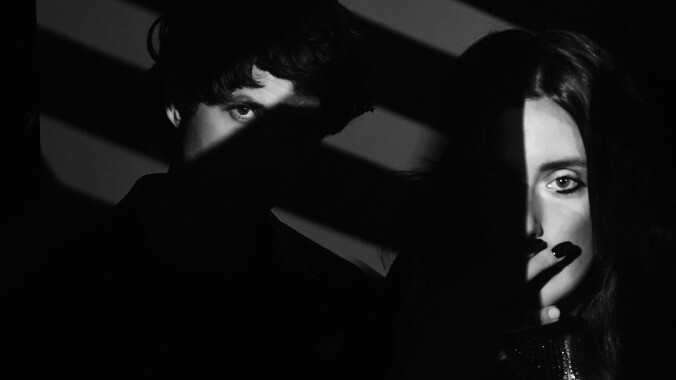Beach House spreads some of its most impressive work across the four chapters of Once Twice Melody
Despite some missteps, the band's new album proves Beach House has more up its sleeve than subdued melodies

When twinkling synths usher the listener into Once Twice Melody—both the opening track and the album of the same name—it feels like you’re entering a fairytale, sprinkled with pixie dust. But the mood quickly changes after the percussion and guitar come in and Beach House vocalist Victoria Legrand introduces a melancholic story about a woman attempting to process newfound loneliness while craving fantastical escapism. With references to Peter Pan’s Neverland, Legrand outlines the woman’s life—it was once a fairytale, but has now “gone to hell,” as she later sings.
Beach House’s music has always had a cinematic quality, and that element is expanded on Once Twice Melody. The Baltimore-based duo of Legrand and Alex Scally divided the album into four chapters, each chronicling a relationship’s dissolution. Beach House’s 2017 album, 7, featured some of the band’s darkest and most experimental tracks, and Once Twice Melody gets even more eclectic, delivering some of the most captivating work of band’s nearly two decade-long career.
The intensity of conflicting feelings that follow a lost love (despair, yearning, hope, cynicism) is intensified by the introduction of a live string ensemble, arranged by renowned composer and conductor David Campbell, who has provided strings for artists ranging from Adele to Evanescence. His additions to Once Twice Melody work in the duo’s favor: The orchestral ensemble spotlights Legrand and guitarist/keyboardist Scally’s talents, rather than hindering them.
Take “Pink Funeral,” an enchanting tune magnified by intense synths and strings. It would feel equally at home in the climactic scene of a fantasy film or in a ballet, with apt references to “swans on a starry lake” and a fairytale turned nightmare.
“New Romance,” another standout, is one of the album’s biggest-sounding tracks, led by mesmerizing synths and drums, with lyrics about rebuilding after losing your identity in a relationship: “Last night, I’m messing up / Now I feel like dressing up” and “Take my chances, new romances, eyes roll on the avenue.”
But while strings create a rich atmosphere for each song, the lyrics don’t always conjure the same; they lack the gut-punch frisson needed for what’s essentially a concept album about a breakup. Though the words give snapshots to this story of heartbreak, the arrangements establish the tone for the narrative, setting the emotional weight behind the songs.
Legrand and Scally’s songwriting style is oblique and poetic, which worked well for their previous records; Once Twice Melody occasionally calls for something more direct, but even so, it doesn’t feel like a major issue. The duo seems to know that their way of conjuring emotions comes from the music, while the words are merely guide posts to help process the impassioned melodies.
There are exciting new elements at play that strengthen the record: a trap beat toward the end of “Through Me”; autotune on “Runaway,” which gives Legrand’s soothing voice a robotic, dejected texture; ’80s synth-pop sounds on “Masquerade” and “Finale.” But while these features feel miles away from the cooing melodies Beach House is known for, the additions work cohesively.
Not every song feels like a spectacle. There are moments where the instrumentation is pared down, shifting attention to Legrand’s vocals. “Sunset,” one of the softest tunes, highlights her voice by taking away drums for most of the track. Its simple melody is paired with acoustic guitar, strings, and what sounds like a wind chime—a clever ingredient that adds enchantment and whimsy.
Once Twice Melody is often musically stunning, but there’s also the issue of releasing the album gradually as chapters. With all the songs tied to the same theme, there’s surprisingly little to distinguish the individual collections. The chapters all contain tracks with sounds quite distinct from one another, so they aren’t even divided sonically. Beach House hasn’t explained the reasoning behind the grouping, so while the chapters may add to the storybook feel of the record, the execution falls flat.
The last chapter has some interesting details. “Hurts To Love” makes the organ somehow sound cheery, and “Modern Love Stories” is a shoegaze-leaning conclusion to the record, declaring, “The end is the beginning, the beginning to an end.” But it feels underwhelming compared to the first chapters, which feature the most attention-grabbing tracks.
Weaker moments aside, Once Twice Melody contains some of Beach House’s most impressive work. With 7, the band suggested that it’s capable of introducing different components after being criticized for sticking to the same subdued melodies throughout its career. But with Once Twice Melody, Beach House proves there’s more to the duo than fans may think, with brash, lively arrangements that shine as much as the restrained ones.